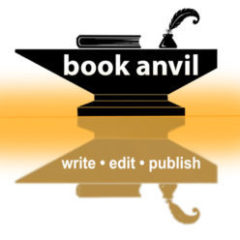This is a simple exercise in paying attention to details when you’re going about your daily life. If you commute by train it’s easy; it you don’t, it’s worth finding somewhere similar to explore.
EXERCISE
Head down concrete stairs into a railway underpass (or under-bridge; or other heavy, dimly-lit structure). Feel the grit underfoot and the jolt of each impact on the steps. Try to imagine you had to do this blindfolded. How would the feel of the space change as you entered the underpass and left the outdoor air?
Pause to inhale deeply. What do you smell?
See if you can think of a visual image that represents that smell. If it’s bus exhaust, you might see a tailpipe. If it’s rotting garbage, you might see a withered apple core.
Stop just long enough to jot these mental images down.
Touch the interior wall or concrete — how does it feel? If it’s rough and cool, try to pinpoint in your mind exactly how it feels. Is there powder residue? Is it damp? Do you feel ‘weighed down’ by the concrete mass overhead, or are your impressions different?
See if you can recall an emotional experience that connects in your mind to the physical sensations of touching the underpass wall and the hard ground underfoot.
Stop just long enough to jot down one significant early memory that you can associate with these sensations — for instance, schoolyard asphalt or the area between two hulking school buildings.
Next, pause in the middle of the underpass to listen to the sounds. Is there a noise of traffic? Or is it quiet? Can you hear water trickling? Are there pedestrian noises? Trains roaring invisibly somewhere? If you move on through the underpass, do these sounds change?
Stop just long enough to jot down these sound-impressions. Try to capture each noise as exactly as possible — that is, try to spell out each sound you hear. If you hear traffic it could be a ‘hum’ or ‘brrr’ or ‘whoosh’, or it could just as easily be nothing resembling a word. Disregard ‘proper’ language. Just try to be as exact as possible when writing the sound.
Lastly, stand at any point in the tunnel (or other structure) and use your eyes in ‘snapshot’ mode to take instantaneous impressions. That is, simply put, blink. Are there any larger impressions or shapes that take your fancy (between eye-shuttings) or remind you of something else? If you do feel reminded of a powerful image (dinosaur? island? cavern? warhorse?), jot down your idea, no matter how little sense it might make to someone else.
The point out of all this isn’t to look or feel silly to other communters. It isn’t even to find useful ways of describing an underground rail passage. It’s to develop the ability to write with feeling, from immersion inside an environment.
And of course it’s to stop and study a place you might not usually pay attention to, in order to gather useful information you could use when writing something similar (such as a cavern, smuggler’s lair, dungeon or bunker).
EXTENDED EXERCISE: In two or three paragraphs, imagine and describe being lost (and perhaps pursued) in an underground structure using the sensory information you gathered.
Point of view for this exercise can either be yourself, or a character you invent for the purpose.
